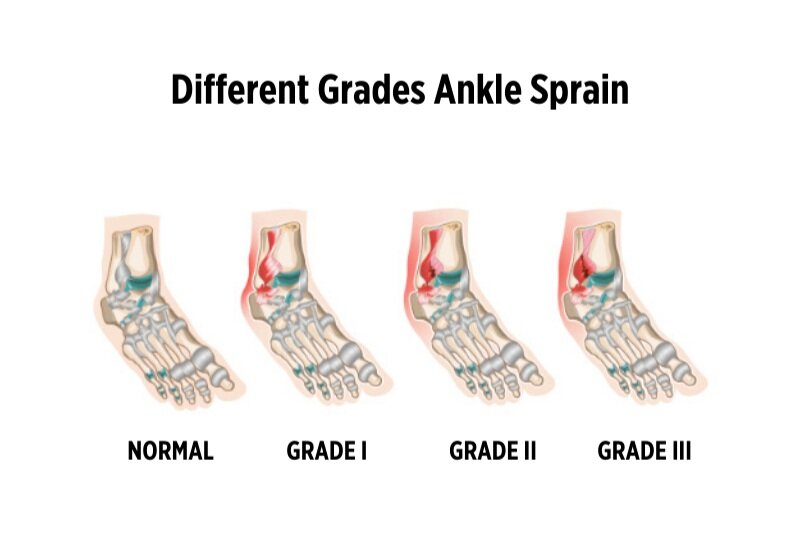The Various Types of Ankle Sprains
Ankle sprains are one of the most common injuries we see at River Podiatry. While this injury occurs quite often, the degree of severity can vary person to person. If you know the signs and symptoms of each degree of an ankle sprain, you will be able to find the proper treatment you need.
Athletes aren't the only ones at risk as a sprained ankle is an injury that can occur quite easily. Activities that we do every day can potentially lead to an ankle sprain such as a quick sideways or twisting movement, or even walking on an uneven surface. In order to accelerate your recovery, it is important to understand the injury and the degrees of an ankle sprain.
HOW AN ANKLE CAN GET SPRAINED
An ankle can get sprained with any movement that suddenly twists the foot beyond the natural range of motion. Although ankle sprains are typically tied to sporting events such as basketball, an ankle can be sprained through normal day to day activity such as:
Tripping on a hole in the ground
Stepping off a curb wrong
Landing wrong when jumping or running on to an uneven surface.
Slipping on ice
When an ankle is sprained, the ankle bone itself is uninjured. Instead, it is the ligaments surrounding the ankle bone that suffer. Ligaments are structures in every joint in the body that help control the joint's movement. The ligament will become injured if it is stretched too far and could result in a partial or complete tear.
The two different types of an ankle sprain are:
Inversion ankle sprain: the most common type of sprain and occurs when the foot falls inward and stretches the outer ligaments too far. Pain occurs on the outside of the ankle and not on the inside of the ankle.
Eversion ankle sprain: occurs when the foot is twisted outwards and the inner ligament is stretched too far. The pain will occur on the inside, and not the outside, of the ankle.
Credit: Volleyball.com
THE SEVERITY OF AN ANKLE SPRAIN
An ankle sprain can be broken down into three categories: first degree, second degree, and third degree.
A first-degree ankle sprain is when the ligaments have been stretched but not torn. Symptoms of a first-degree ankle sprain include mild pain, swelling, joint instability, joint stiffness and difficulty when jogging or jumping.
A second-degree ankle sprain is the most common of ankle injuries and is a partial tearing of the ligament. Symptoms of a second-degree ankle sprain include significant swelling, bruising, moderate pain, some loss of motion or use of the ankle, and difficulty when walking.
A third degree ankle sprain is the most severe of ankle sprains. With this type of ankle sprain, the ligament has been torn completely. Symptoms of a third degree ankle sprain include severe swelling, severe pain, instability of the joint, extreme loss of motion, and pain when walking.
Should you have any questions, please contact our team here to set up an appointment online, by email at info@riverpodiatry.com or by phone at (845) 735-8440.



